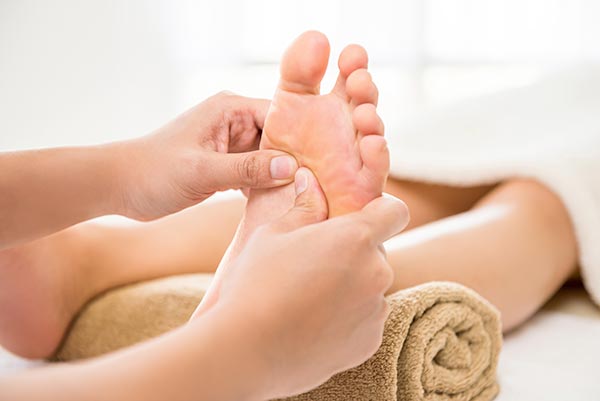Acupuncture can improve quality of life for those with COPD
09/25/2019 / By Evangelyn Rodriguez

Chronic obstructive pulmonary disease (COPD) is a deadly disease with a high mortality rate. It is characterized by obstruction of the airflow and inflammation along the airways, which affect an individual’s ability to breathe. Due to these factors, people with COPD tend to suffer from breathlessness and are limited in terms of physical activities, which impacts their health and their quality of life negatively. Some studies have looked into the effects of acupuncture therapy on patients with COPD. Acupuncture is a 3, 000-year-old technique used in traditional Chinese medicine and is associated with healing and pain relief. In a recent study published in BioMed Research International, researchers from Henan University of Chinese Medicine evaluated the efficacy and safety of acupuncture therapy in improving the functional effects and the quality of life of patients with COPD. They reported that acupuncture was more effective than other treatments and could be used as a safe and reliable adjunct to conventional COPD treatments.
Acupuncture therapy positively affects the health of COPD patients
Acupuncture is based on an ancient philosophy that equates the smooth, unobstructed flow of energy (qi) with good health. In traditional Chinese medicine, acupuncture is used to release blocked qi in the body – the root cause of pain and illnesses – and stimulate function. By activating specific sites or acupoints throughout the body through the insertion of needles, acupuncture therapy (AT) evokes the body’s natural healing process and provides relaxation and long-lasting pain relief. Modern research suggests that acupuncture therapy can benefit various organs and major bodily systems. (Related: Acupuncture has been clinically proven to reduce pain.)
For their study, the researchers searched through various databases for randomized controlled trials (RCTs) that evaluated the effects of AT on COPD patients. They found 19 studies that involved a total of 1, 298 participants and used them for their analyses. They performed study selection, data extraction, and risk of bias assessment independently and used two different softwares for their statistical analysis. For their primary outcome measures, they used the six-minute walk distance (6MWD) and the St. George’s Respiratory Questionnaire (SGRQ).
The researchers reported that 6MWD improved more in the experimental group (AT) than in the control group (conventional treatments). 6MWD is an important measure of the functional exercise capacity of patients with COPD. It is often used in the evaluation of the efficacy of therapeutic interventions, such as pulmonary rehabilitation, surgery, and pharmaceutical management. The researchers also reported that patients managed to walk a significantly greater distance after AT, suggesting that AT may improve the exercise capacity of COPD patients.
AT also improved symptom domain scores, activity domain scores, and impact domain scores of SGRQ in COPD patients. SGRQ is a well-established measurement used to assess the quality of life of asthma and COPD patients. Although the researchers found no significant improvement in SGRQ total scores between the experimental and the control groups, the mean difference of symptom domain scores, activity domain scores, and impact domain scores were high enough to support the positive impact of AT on the health status of COPD patients.
Lastly, the researchers reported that while the improvement of post-bronchodilator forced expiratory volume (FEV1) was not significant between the two groups, a subgroup analysis showed that AT, when used as an adjunct to other treatments, could improve FEV1 better than conventional treatments alone. FEV1 is used in the diagnosis, classification, treatment, monitoring, and in establishing prognosis for COPD patients. The improvement of FEV1 in COPD patients suggests that AT can improve pulmonary function.
Based on their findings, the researchers concluded that AT is effective in improving functional effects and the quality of life of COPD patients. However, further high-quality RCTs are needed to confirm the efficacy and safety of AT in treating COPD.
Sources include:
Tagged Under: acupuncture, adjunct therapy, alternative medicine, chronic obstructive pulmonary disease, Combination therapy, COPD, lung disease, lung health, natural cures, natural medicine, pain relief, quality of life, relaxation, research, stopsmoking, TCM, traditional Chinese medicine
RECENT NEWS & ARTICLES
COPYRIGHT © 2017 NATUROPATHY NEWS



















